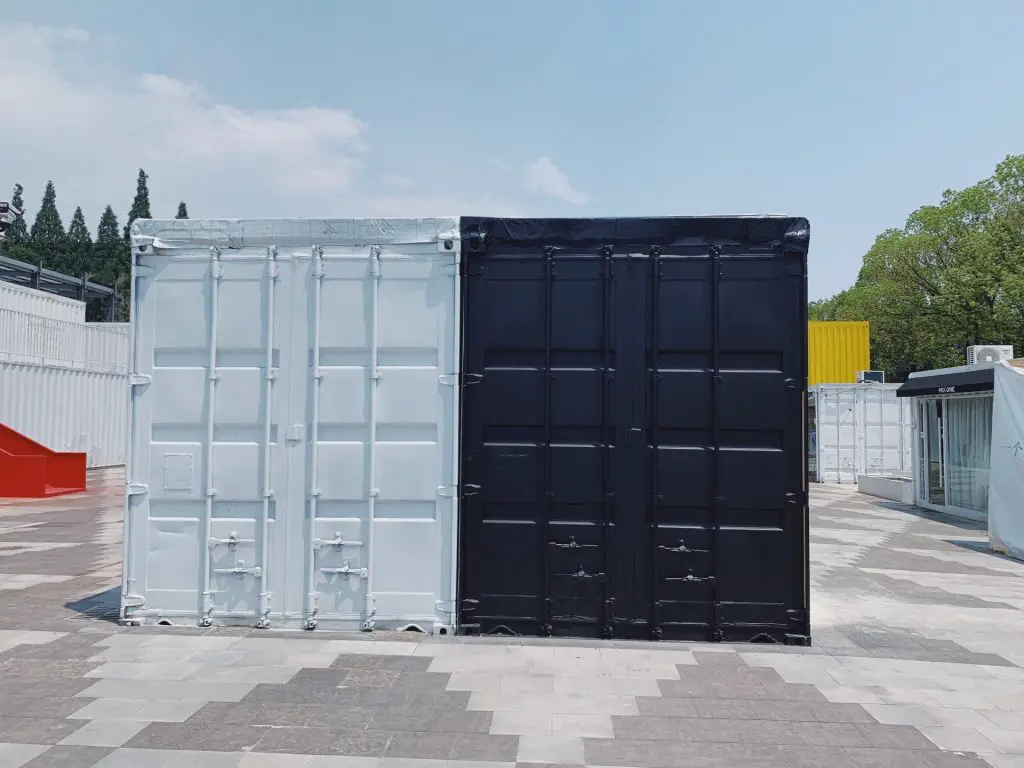Can You Store Furniture in a Shipping Container
If you’re considering using a shipping container to store your furniture, you may be wondering if it’s the right choice for you. There are a few things to consider when making your decision. First, think about how much furniture you need to store.
If you have a lot of heavy or large pieces, a shipping container may not be the best option. Shipping containers are also not typically climate-controlled, so if you live in an area with extreme temperatures, your furniture may be at risk for damage. However, if you have a small amount of furniture that you need to store for a short period of time, a shipping container could be a great option.
They’re affordable and readily available, and can be stored just about anywhere.
- Choose the right size shipping container
- You’ll need to measure your furniture and calculate the volume to determine which size shipping container you need
- Clean and prep your furniture
- Make sure to clean your furniture thoroughly before storing it in a shipping container
- This will help protect it from dirt and dust while in storage
- Wrap your furniture properly
- Use blankets or other materials to wrap your furniture and protect it from scratches or other damage while in storage
- Load your furniture into the shipping container carefully
- Be careful not to damage your furniture or the shipping container as you load it in
- Try to distribute the weight evenly throughout the container for stability during transport
- 5 Seal up the shipping container tightly once everything is loaded inside
- You don’t want any moisture or pests getting inside and damaging your belongings while in storage

Can Furniture Be Stored in a Shipping Container?
Yes, furniture can be stored in a shipping container. There are a few things to consider when doing so, such as the size of the furniture and the climate inside the container. Shipping containers are typically made of steel, which is not ideal for storing furniture made of wood or other materials that can be damaged by moisture.
It is important to make sure that the container is clean and dry before storing any furniture inside. If possible, it is also best to wrap the furniture in plastic or another material to protect it from scratches or other damage while in storage.
What Should You Not Store in a Shipping Container?
There are a few things you should not store in a shipping container, such as:
1. Perishable food items: These will go bad quickly without proper refrigeration, so it’s best to avoid storing them in a shipping container.
2. Valuables: Shipping containers are not always the most secure option, so it’s best to avoid storing valuables in them.
3. Hazardous materials: Some materials may be corrosive or flammable, so it’s important to check with your local regulations before storing them in a shipping container.
How Do You Keep Moisture Out of a Shipping Container?
If you’re looking to keep moisture out of your shipping container, there are a few things you can do. First, make sure that the container is properly sealed. This will help to create a barrier between the inside and outside of the container.
You can also use desiccants or humidity-control products to help absorb any moisture that may be present in the air. Finally, if you’re storing items in the container that are sensitive to moisture, you can use water-resistant packaging materials to protect them. By taking these measures, you can help to ensure that your shipping container remains dry and free from moisture.
How Do You Pack Furniture in a Shipping Container?
When you are ready to pack your furniture in a shipping container, there are a few things that you will need to do in order to ensure that everything arrives safely and in one piece. Here are a few tips on how to pack furniture in a shipping container:
- Choose the right size shipping container. You will need to take into account the size and weight of your furniture when choosing a shipping container. Make sure that you choose a container that is big enough to fit all of your furniture and that it can handle the weight of your items.
- Prepare your furniture for packing. Before you start packing your furniture, you will need to make sure that it is clean and free of any dirt or debris. You will also want to disassemble anything that can be taken apart, such as bed frames or table legs. This will make packing easier and will help to protect your furniture during transit.
- Use padding and protection for delicate items. When packing fragile or delicate items, be sure to use plenty of padding material such as bubble wrap or foam peanuts. You may also want to wrap these items in blankets or towels for extra protection.
- Load heavier items first. When loading your furniture into the shipping container, start with the heaviest items first and work your way down to the lighter pieces. This will help to prevent damage during transit and will make unloading much easier once you reach your destination.
- Stack” pieces whenever possible . Whenever possible, try to “stack” pieces of furniture on top of each other rather than placing them side by side . This will again help prevent damage during transit and will save space inside the container . Try not , however , To stack pieces too high ; leaving some room between stacks will give you more stability overall . In addition , if possible , leave some room along the sides of thecontainer so that air can circulate freely ; this circulation can help prevent mold or mildew from forming inside .
- Tie down” large pieces securely . Once allofyourfurnitureis loadedintothecontainer ,you’llwanttouseropesor straps totightly “tie down” largerpieces so theycannotshiftor slide aroundduringtransit . Doingthiswillhelp topreventdamageandwillkeepeverythingmoresecure duringthejourney .
- Seal up” gapsand openingswithpackingmaterialtopreventwateror pestsfromenteringthecontainer .
Is a Shipping Container Good for Storage?
There are a number of reasons why people might want to store items in a shipping container. Shipping containers are typically made from steel, which makes them durable and weather-resistant. They’re also designed to be stackable, so you can make the most of the space you have available.
And because they’re often used for transporting goods across long distances, you can be sure that your belongings will be safe and secure inside one. One potential downside of using a shipping container for storage is that they can be quite cramped inside. If you’re planning on storing large or bulky items, you might want to consider renting a larger container or even hiring a storage company that has shipping containers available.
Otherwise, you’ll need to get creative with how you arrange your things so that everything fits snugly inside. Overall, though, using a shipping container for storage can be a great solution if you need somewhere safe and weatherproof to keep your belongings. Just make sure to measure the space before making any decisions, and remember that you might need to get creative with how you arrange things once everything is inside!
Can I Store a Mattress in a Shipping Container?
You can store a mattress in a shipping container, but there are a few things to keep in mind. First, make sure the mattress is clean and dry before storing it. Second, if possible, wrap the mattress in plastic to help protect it from moisture.
Third, if you are planning on storing the mattress for an extended period of time, consider using a dehumidifier to help prevent mold and mildew growth. Finally, be sure to label the container clearly so you know what is inside.
Shipping Container Load with Furniture
What Not to Store in Shipping Containers
Most people are aware that there are certain items that cannot be shipped via container due to the potential for damage or leakage. However, there are some things that you may not realize cannot be stored in a shipping container. Here is a list of items that you should avoid storing in your shipping container:
1. Hazardous materials: This includes anything flammable, corrosive, or toxic. Examples include cleaning supplies, paint thinners, and propane tanks.
2. Perishable food: Without proper ventilation and temperature control, food will spoil quickly in a shipping container.
3. Plants: Shipping containers can get very hot, which can damage delicate plants. In addition, many plants require specific amounts of sunlight and water, which is difficult to provide inside a container.
4. Valuables: If you must store valuables in a shipping container, be sure to insure them as they would be difficult to replace if damaged or stolen.
Conclusion
It is possible to store furniture in a shipping container, but there are some things to keep in mind. Shipping containers are designed for storing goods that will be shipped, so they are not always the best option for long-term storage. If you do decide to store furniture in a shipping container, make sure to protect the furniture from moisture and pests.







